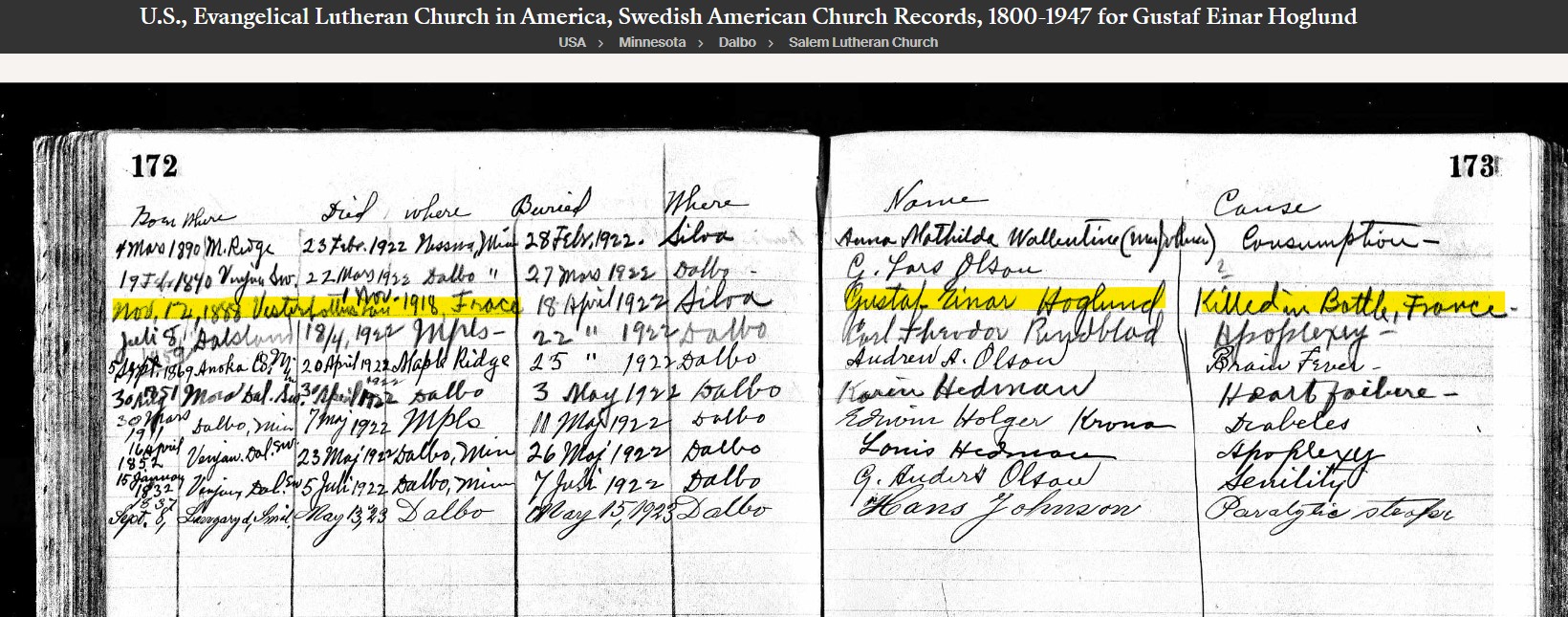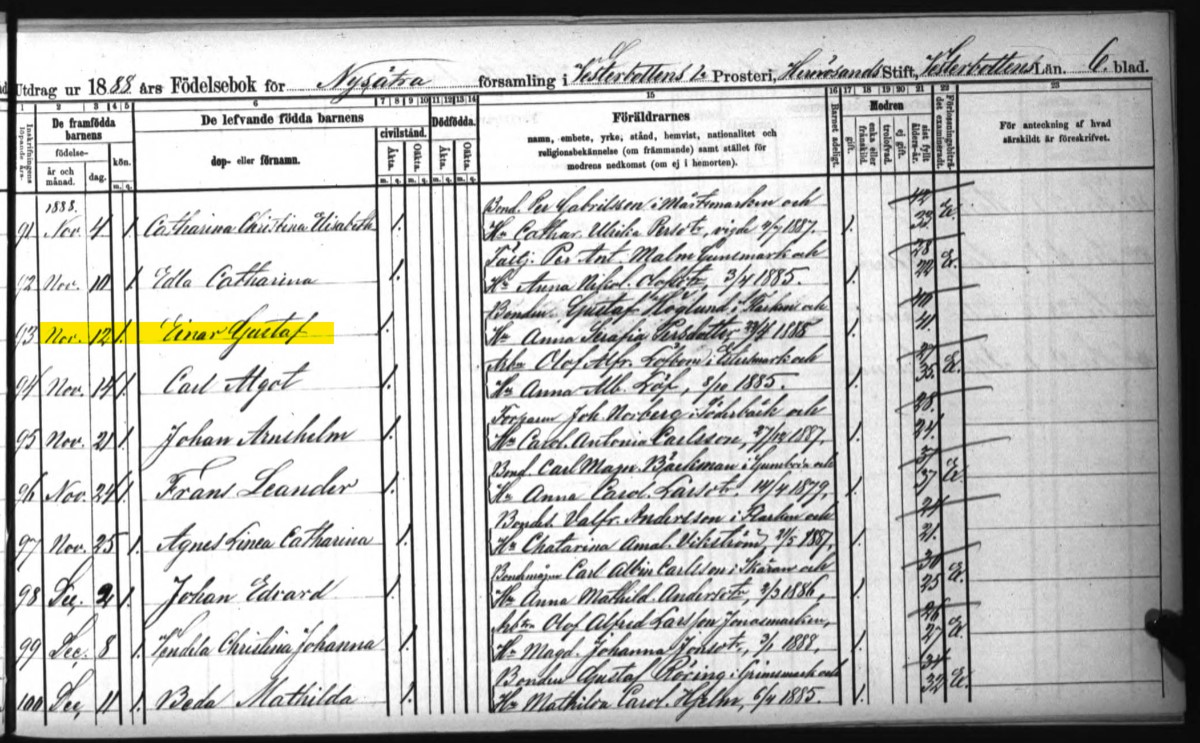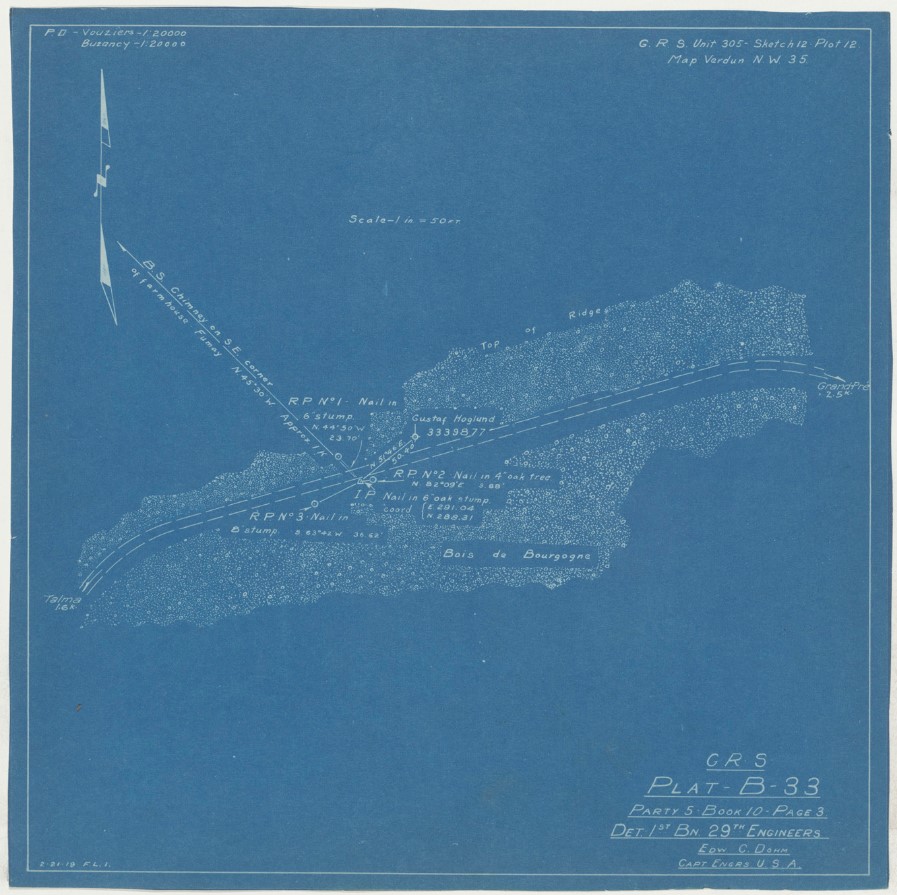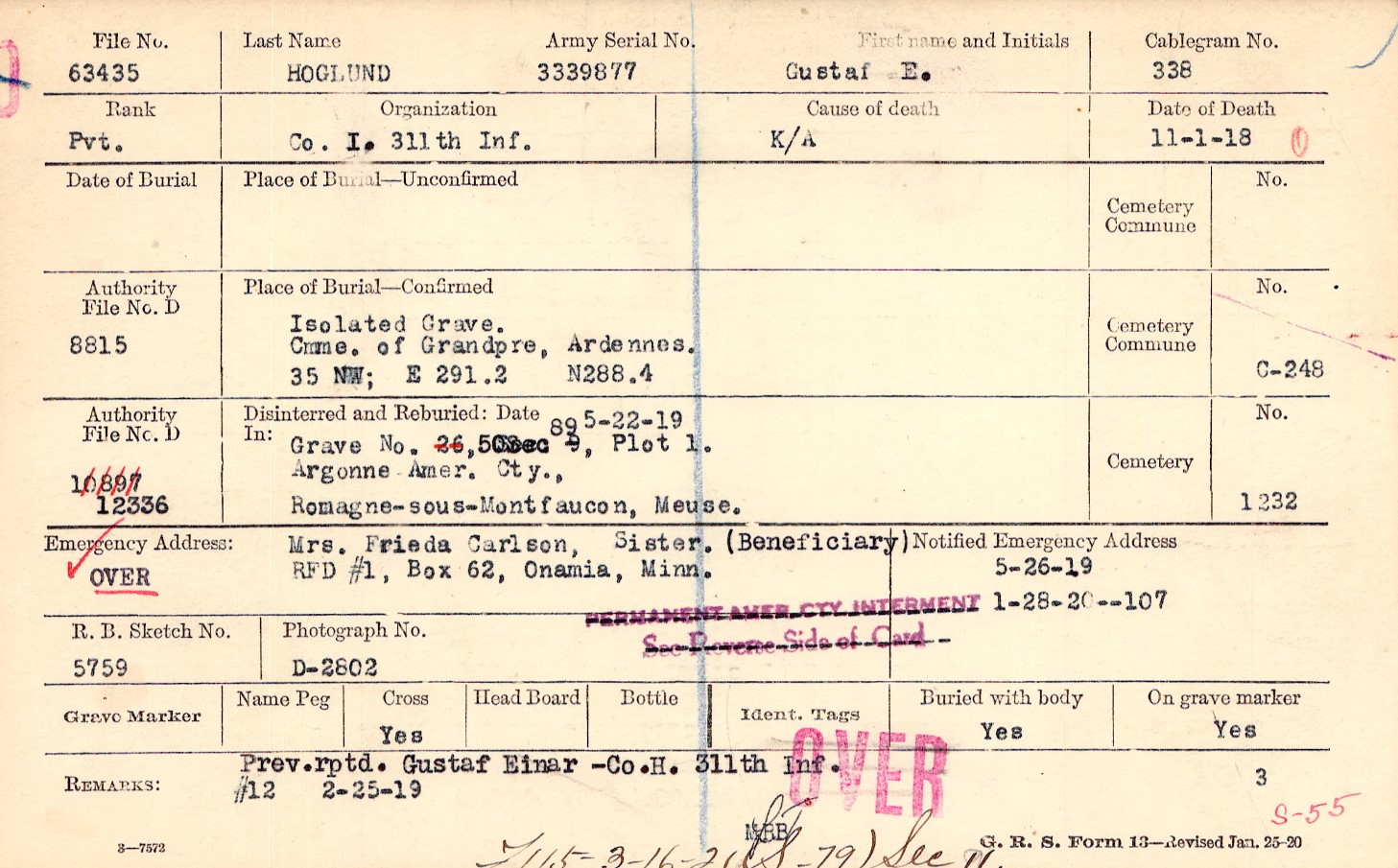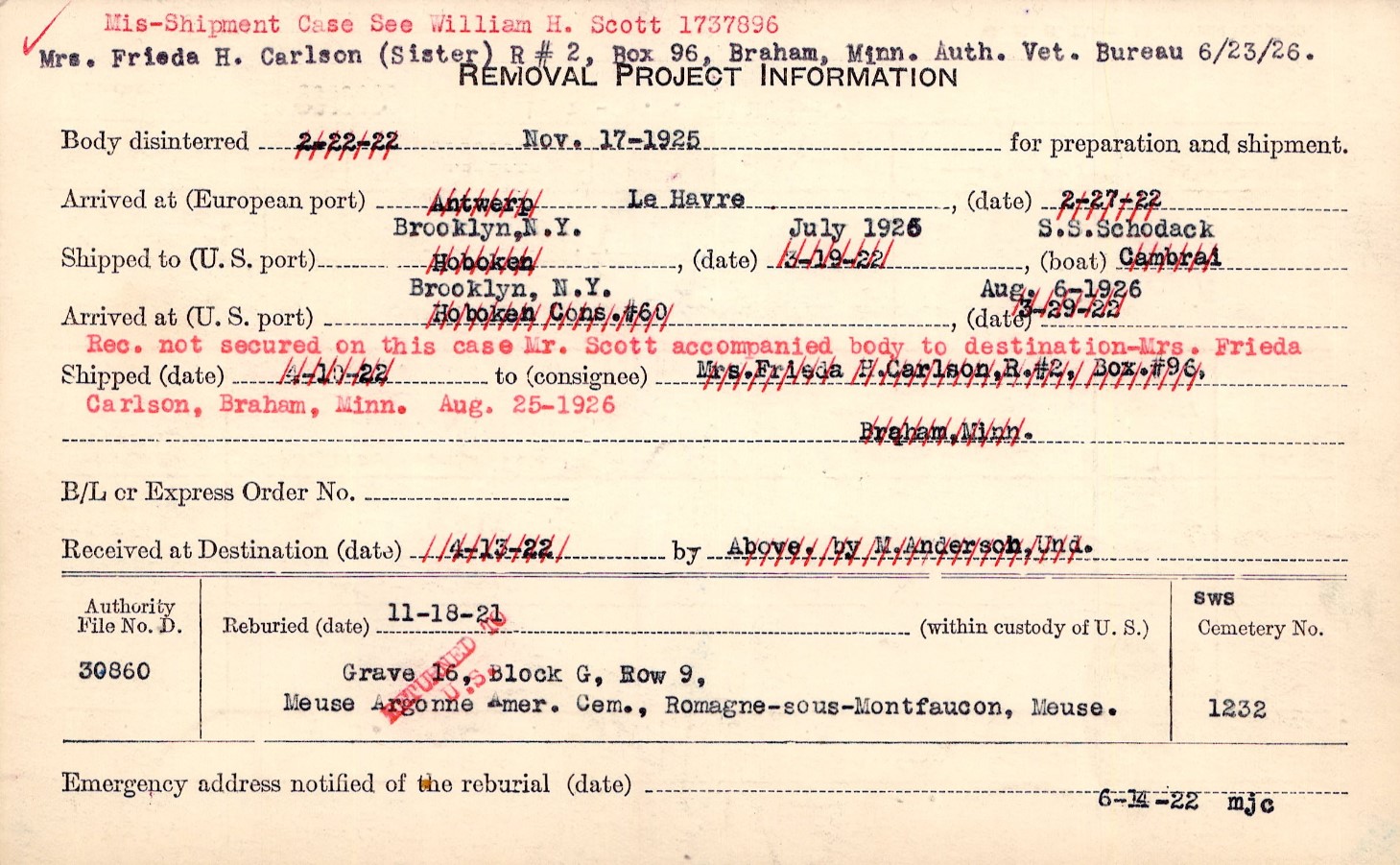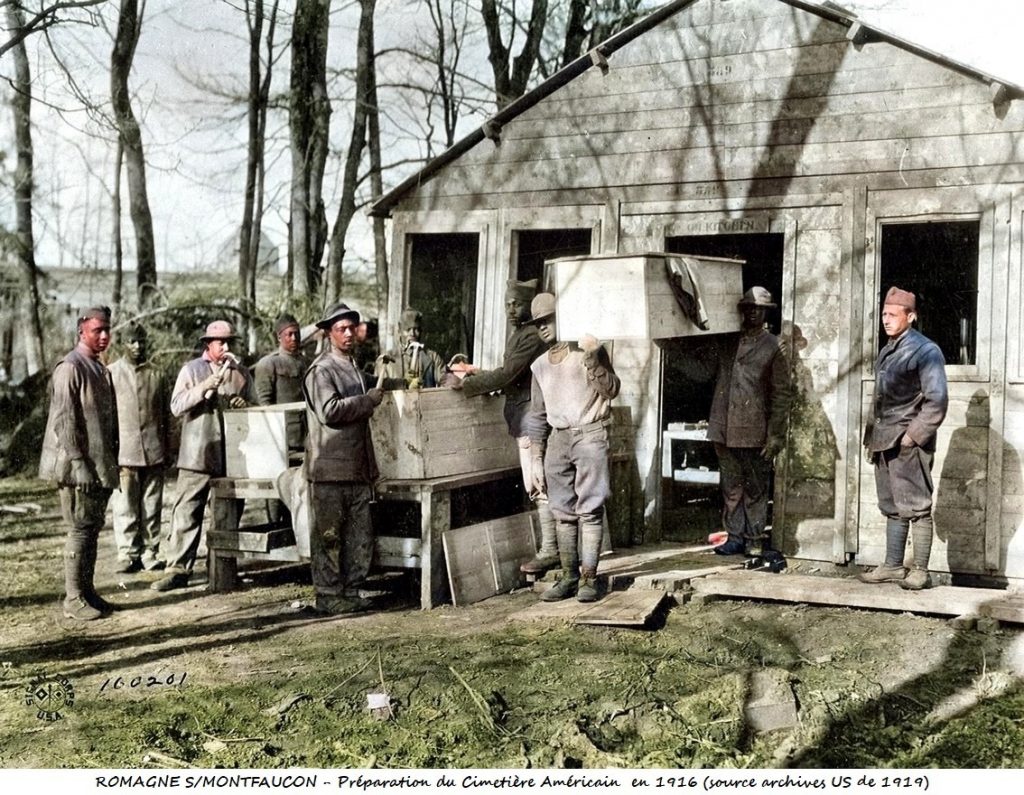I hope you all have had a very good start on 2025, the time flies, and for me it has been a well deserved, if I may say so, winter leave.
I will now take a grip around my research and continue according to my project plan, and I hope you want to follow me along the way.
In the end of 2024 I decided to broaden my limitations to put in those soldiers who fought and fell in the Great War, but are buried outside France and Belgium. I have already added many of the Swedish born soldiers who fought for the American Expeditionary Forces, and I will now continue to add those who fought for the Canadian Expeditionary Forces, who fits into the description above.
In this case I will mention those who met any type of combat situation in the fields, fell in combat or died of disease, and were transported back and buried in England or Canada, or other countries.
A quick search for Swedish born soldiers who in the Canadian National Archives gives a result of a list with 566 names stated to be born in Sweden, of those Swedes who were connected to Canadian Expeditionary Forces, C.E.F. According to the author Elinor Barr, she states in her book – Swedes in Canada-Invisible Immigrants – that over 1680 Swedish immigrants signed up for duty in World War 1. I have only been able to find those 566 connected to C.E.F.
From those 566 Swedish born soldiers, I have been able to confirm at least 117 individuals who died. Elinor Barr says in her book that she have a figure of 122 Individuals. I think some of those can be behind small errors in documents, like individuals born in Stockholm, Saskatchewan or similar. I will look more into that.
Below I add three more individuals to my earlier 114, which gives me 117 so far.
Emil Lund (Anders Emil Lund)
Emil was born in Ockelbo parish, Gävleborgs county, May 26th, 1883. He belonged to Gävle Naval Corps before he left for North America in 1906. He was heading for Swan River in Manitoba, Canada.
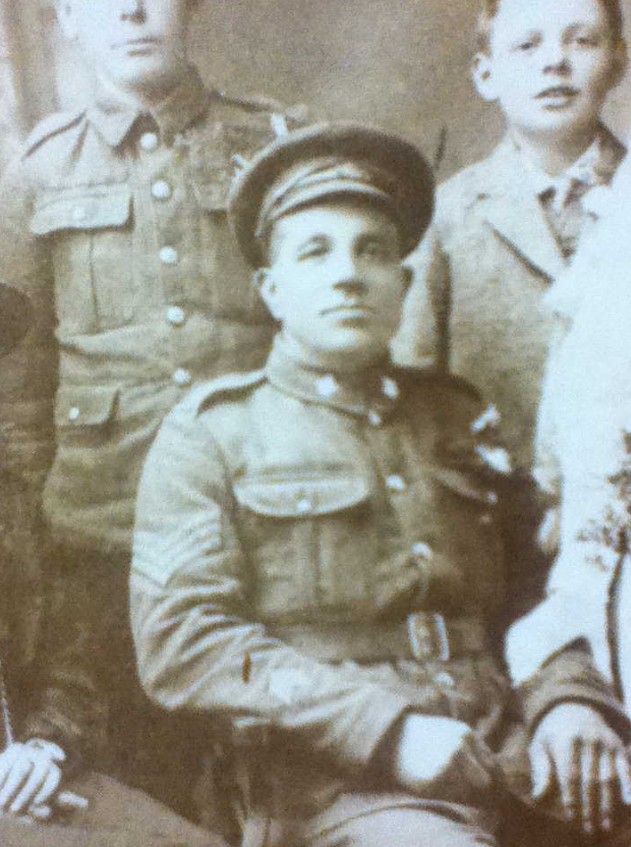

He signed his Canadian Forces Attestation Papers on December 24th, 1915. He later left Canada and arrived in England in April, 1916, belonging to the Canadian Forestry Corps.
Emil seemed to have had a troublesome period during his service, with quite many “AWOL”, but he received a medal for his service that I haven’t seen before. He was awarded the MSM, British Meritorious Service Medal (MSM), in June 1919, in London.
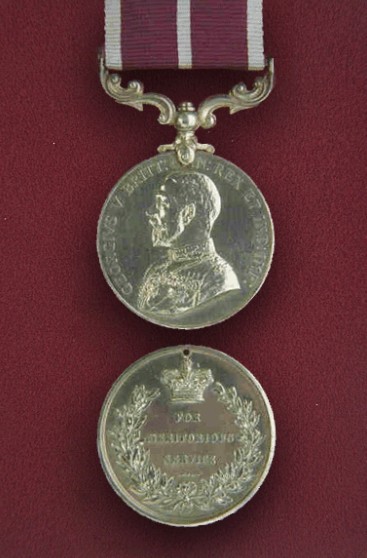
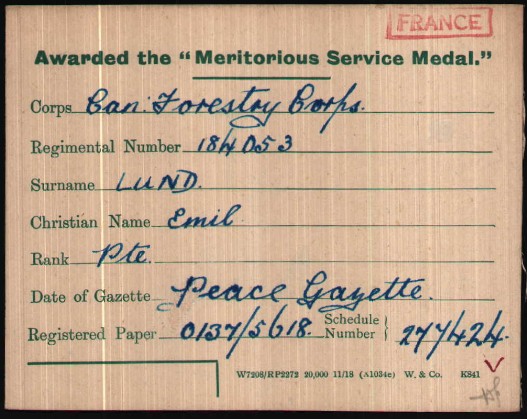
For some reason Emil committed suicide in Canada, according to his casualty card, and died December 31st, 1920. He is now buried in Mountain View Cemetery in Vancouver, British Columbia, Canada.
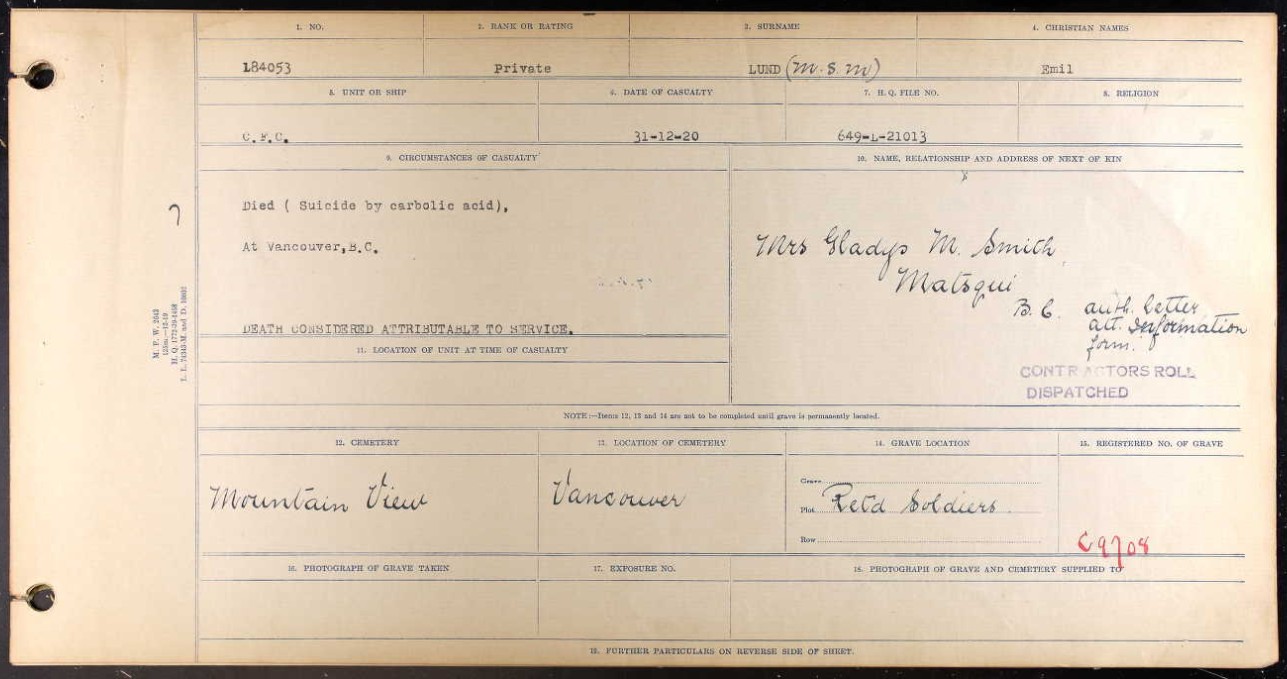

May Emil rest in peace.
Erik A Eriksson (Erik Albert Eriksson)
Sometimes it is fascinating to read files from the archives, but also very tragic to read about some of the destinies of the soldiers. I can imagine the hard life of the soldier Erik Albert Eriksson. It did not went well for him during his service in the Canadian Forces.
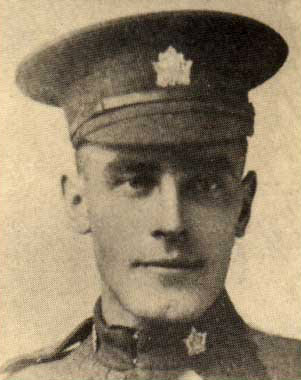
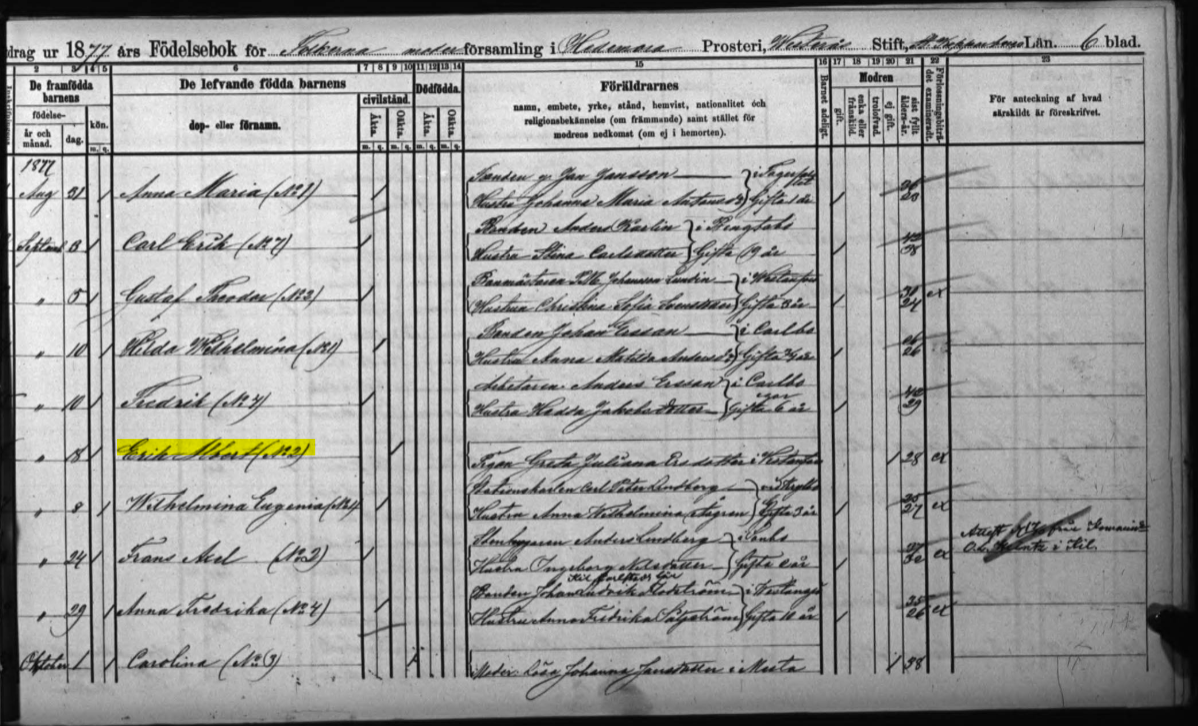
Erik was born in Folkärna parish, Sweden, Sept 18, 1877, and raised by his mother, maid Margreta Juliana Ersdotter. His father is unknown. He left Sweden for Canada in November 1904, and travelled alone for some reason. His address was Calgary when he signed for the Canadian Forces in November 1916.
He left Canada with his unit, 211th Battalion who later became 8th battalion, Canadian railway Troops. He landed in France in June 1917, but it didn’t went well for Erik.
Reading the documents about his medical condition, he suffered from great mental issues which caused his fellow mates some trouble during a normal working day. The documents tells us a quite detailed story, see below:
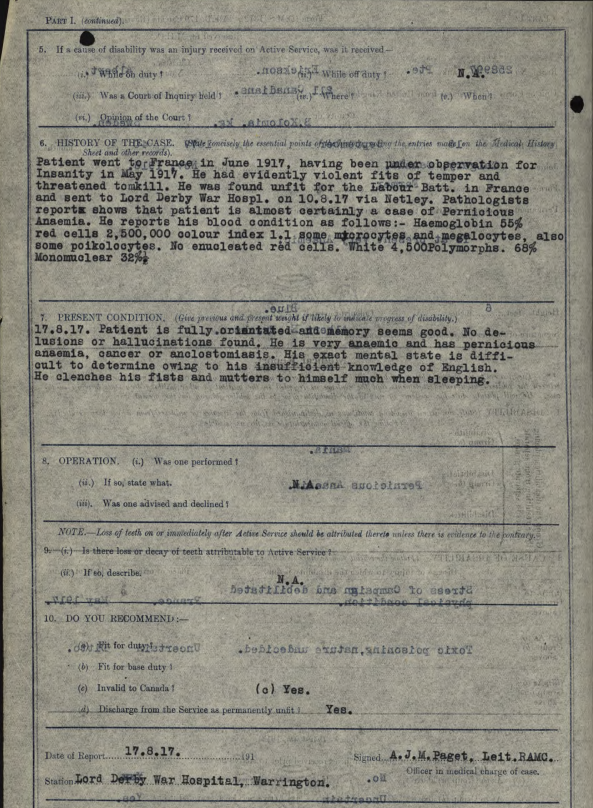
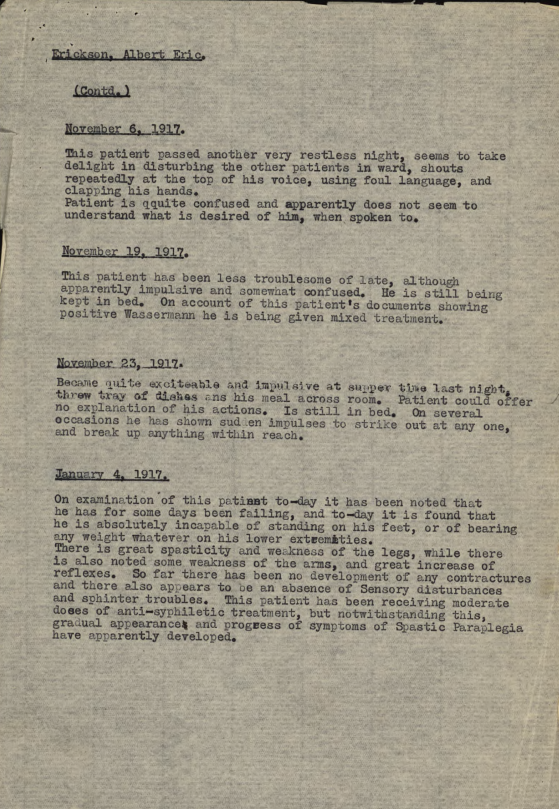
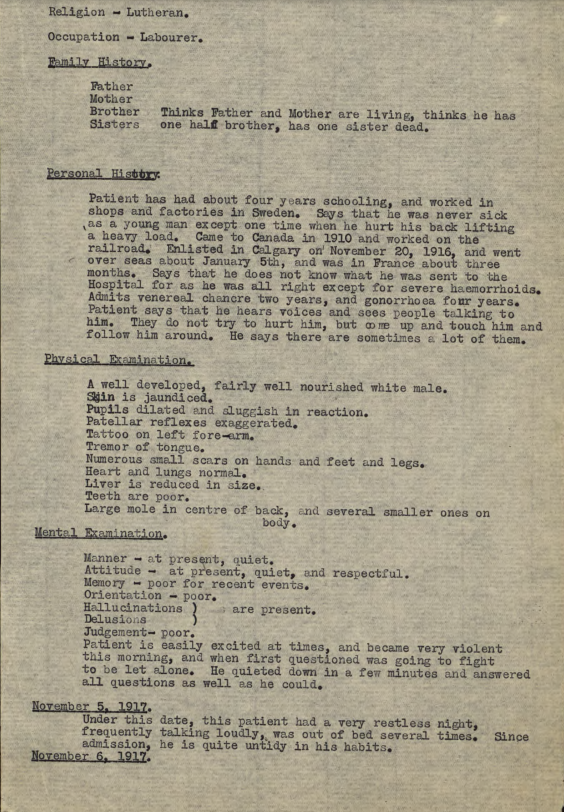
He was discharged and went back home to Canada and tragically died on September 21, 1918. Erik is buried in New Westminster (Fraser) Cemetery in British Columbia, Canada. I find it sad that his mother still was in Sweden, and her son buried in Canada, I so wonder if someone from his family ever could visit him.
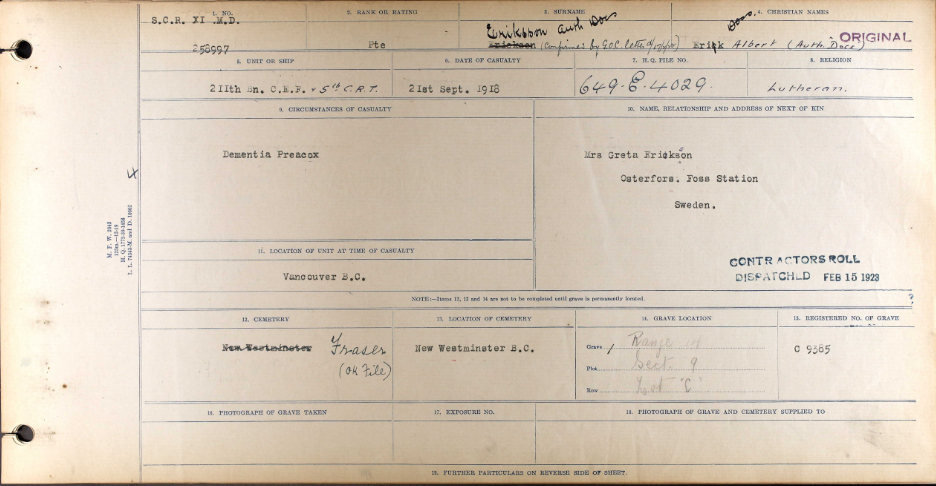
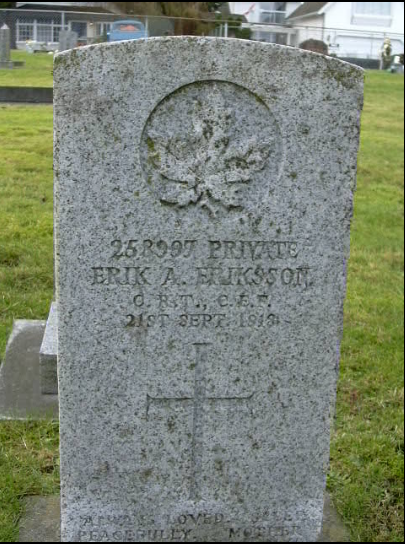
May Erik’s mind be in peace.
Cail Ivar Erickson (Karl Ivar Sanfrid Eriksson)
Ivar was one of quite few soldiers who continued to serve in the units from the C.E.F, who went to the Murmansk region in 1919.
Carl Ivar Erickson was born in Kärna parish, Linköping, Sweden, on August 14th, 1889, and raised by his parents, his mother Hilda Sofia Gustafsson and his father Erik Peter Karlsson. Before he left Sweden for North America in 1914, he was part of the Swedish Infantry for 6 years as a Sergeant, as he also served as in C.E.F.
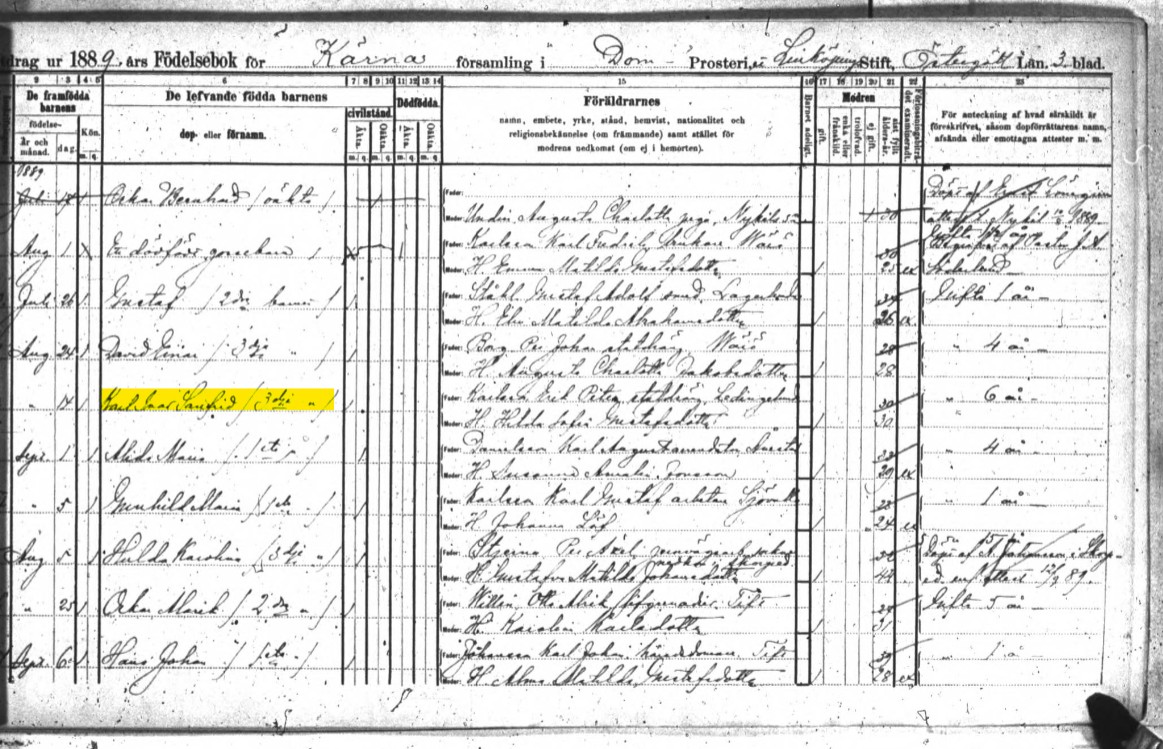
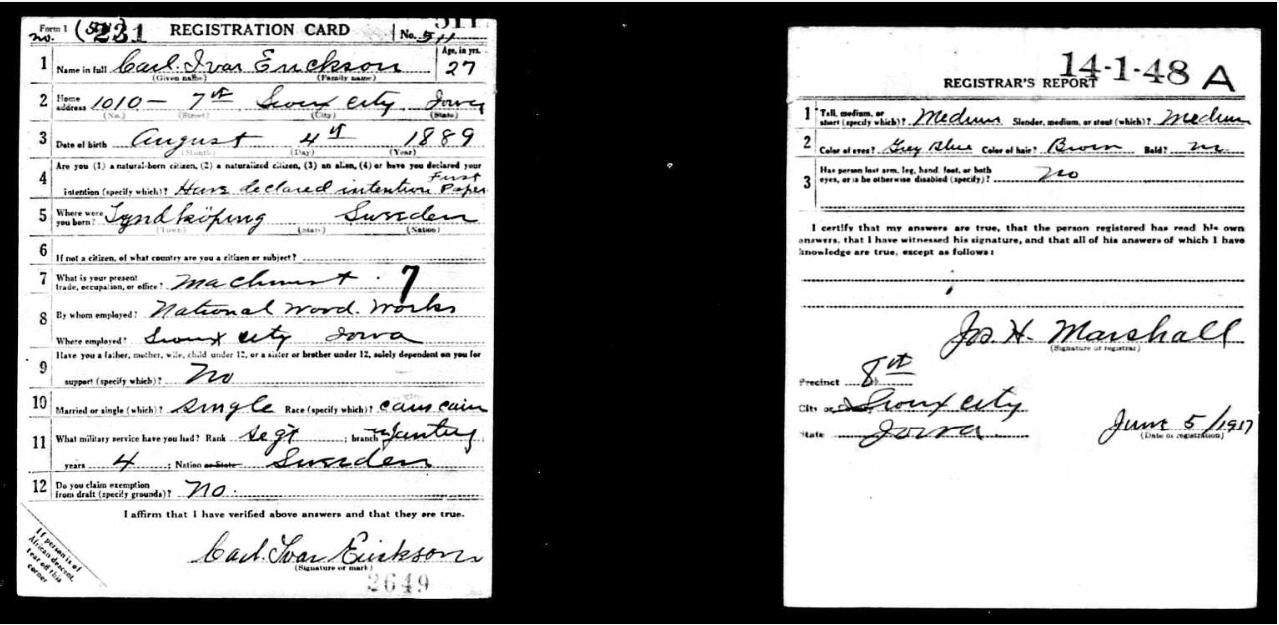
Carl was initially drafted in the US Draft on June 5th, 1917, but in March 1918 he signed his attestation papers for the C.E.F, arrived in England in May 1918, and later on disembarked in Murmansk in September 28, 1918, as a part of the ‘Syren Party’, in the North Russian Expeditionary Forces, NREF.
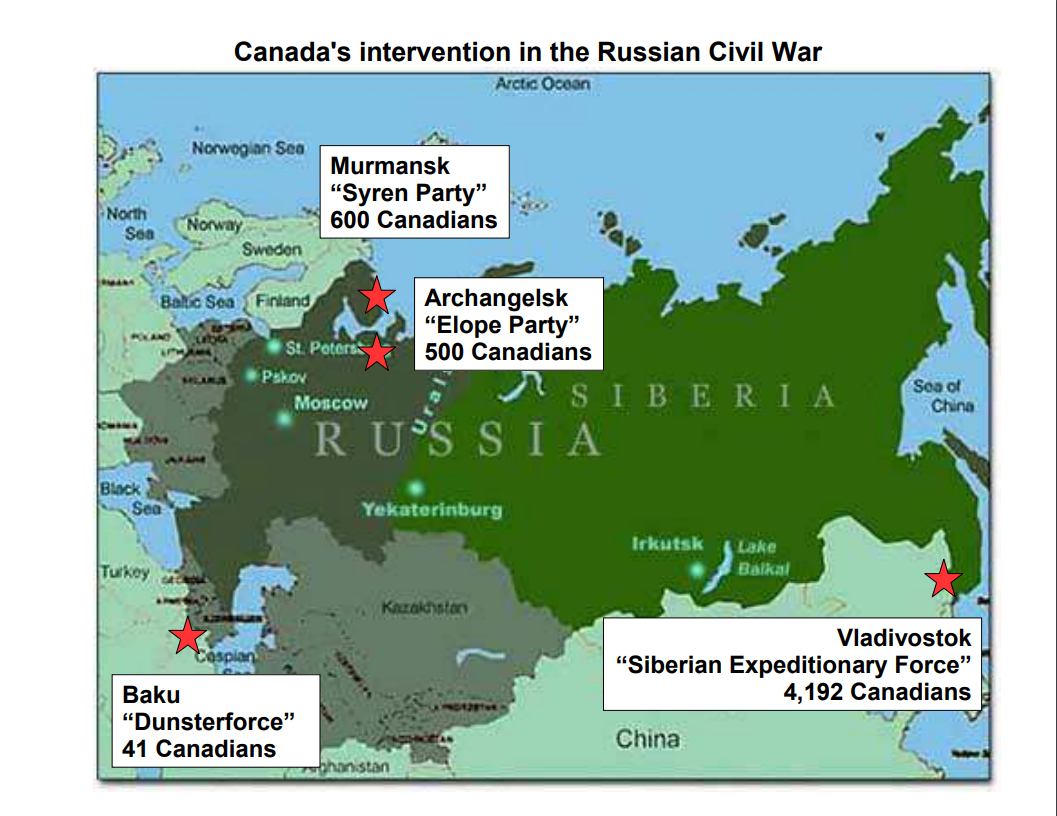
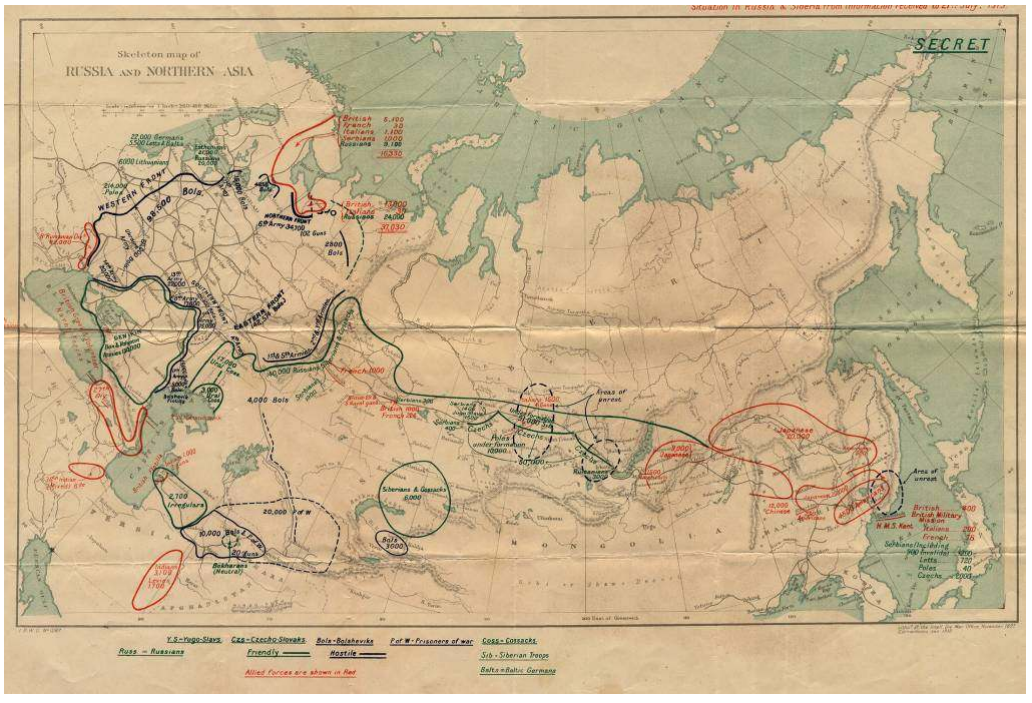
One article in a Swedish-American Newspaper seems to explain the situation about Erickson, and about the situation when he died. I have translated the article from Swedish to English. A bit peculiar situation indeed. Imagine the situations they experienced.
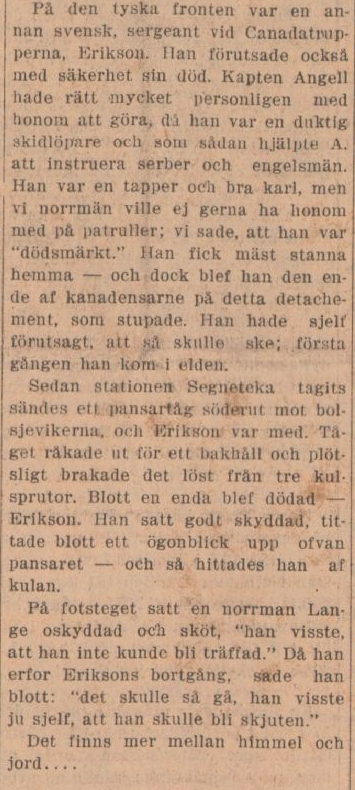
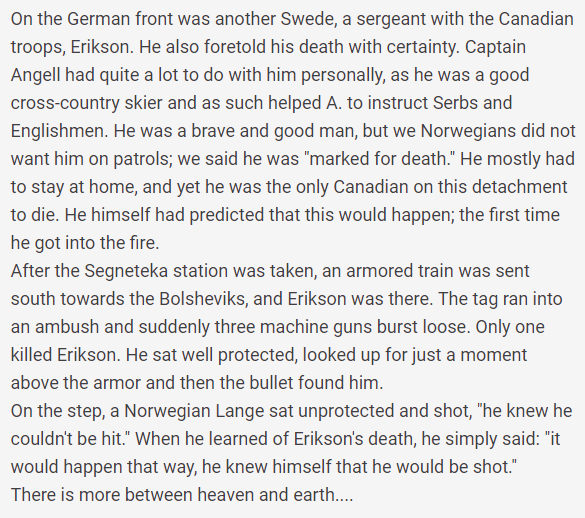
Carl Ivar is buried in Murmansk, at Soroka Zavode Cemetery, mentioned on the Archangel Memorial, Murmansk, Russia.
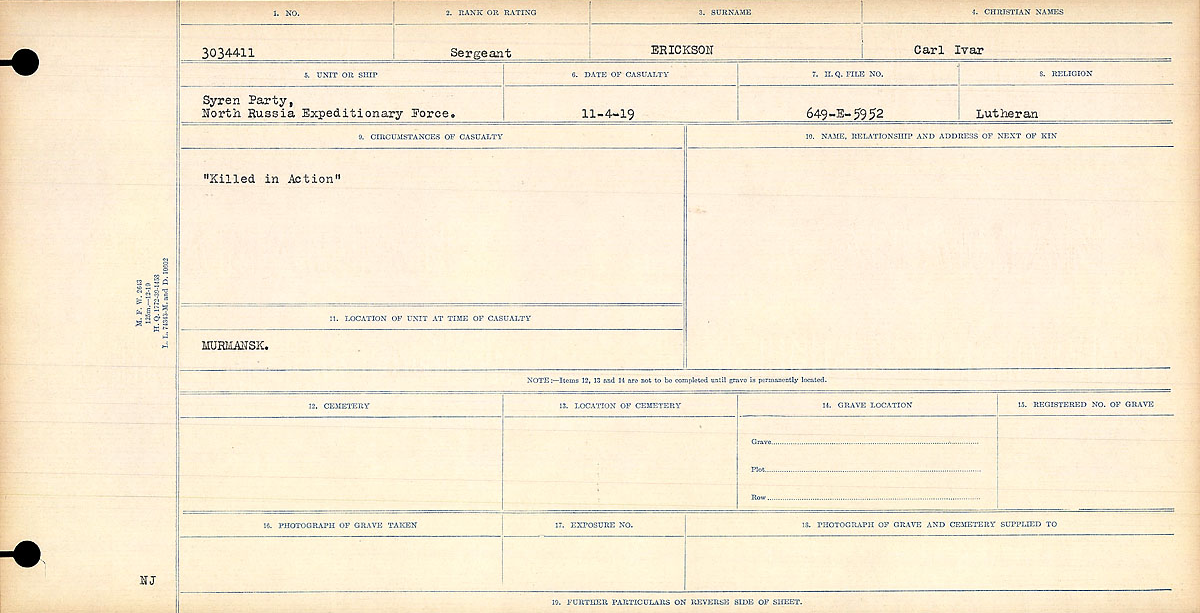
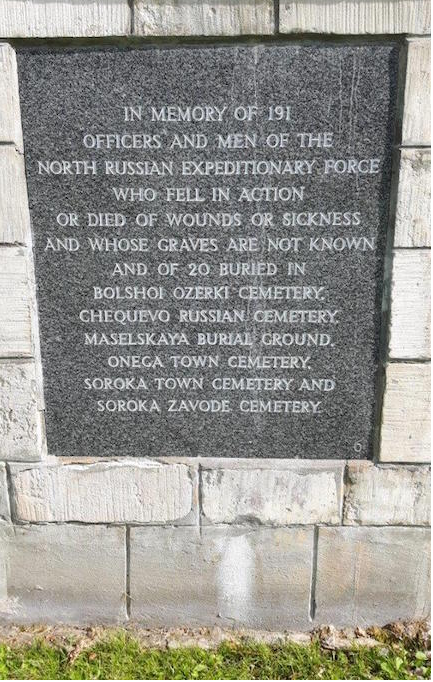
My Carl rest in peace.


